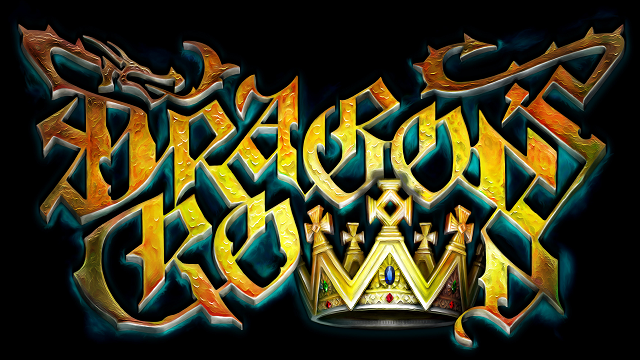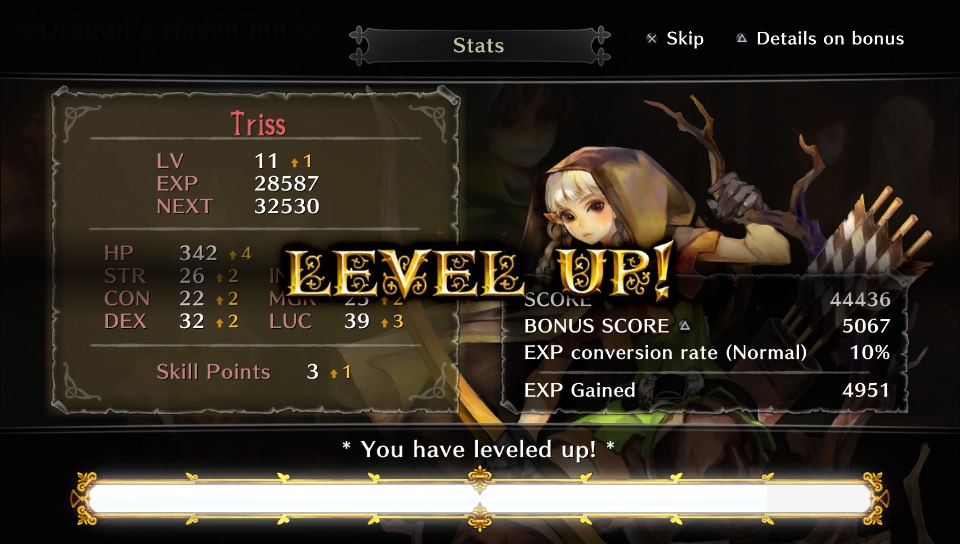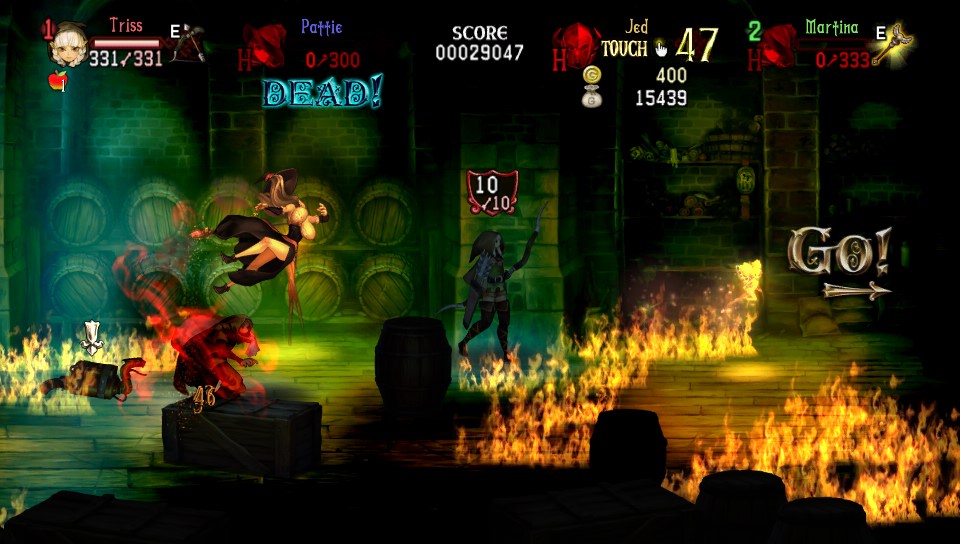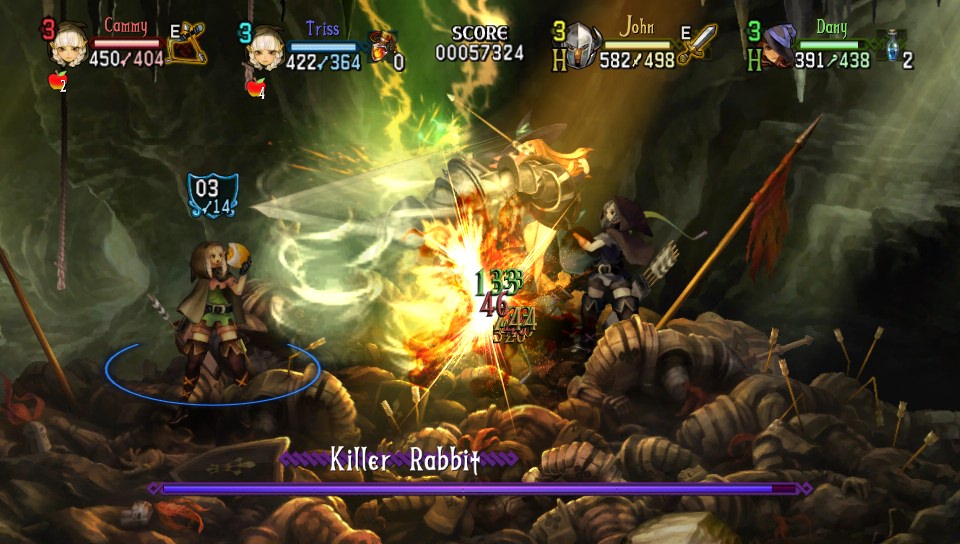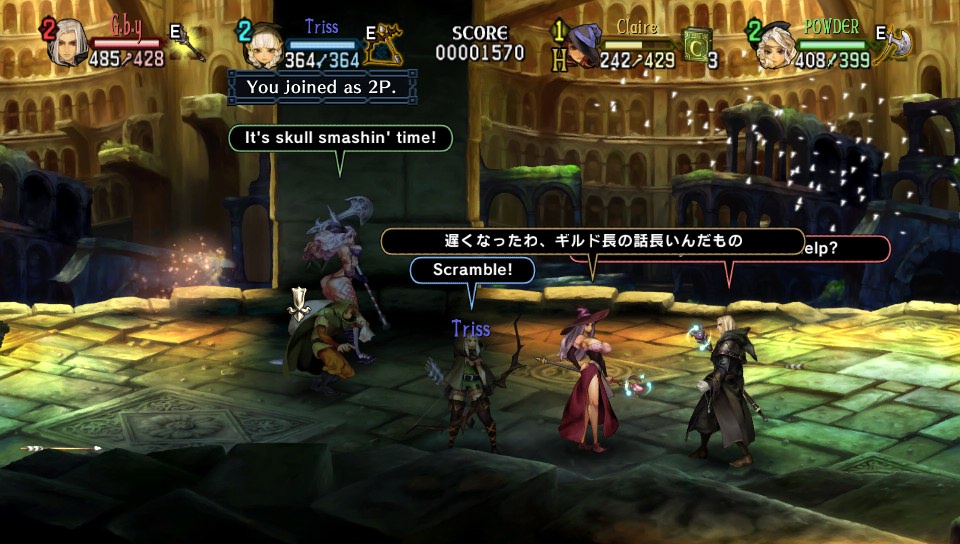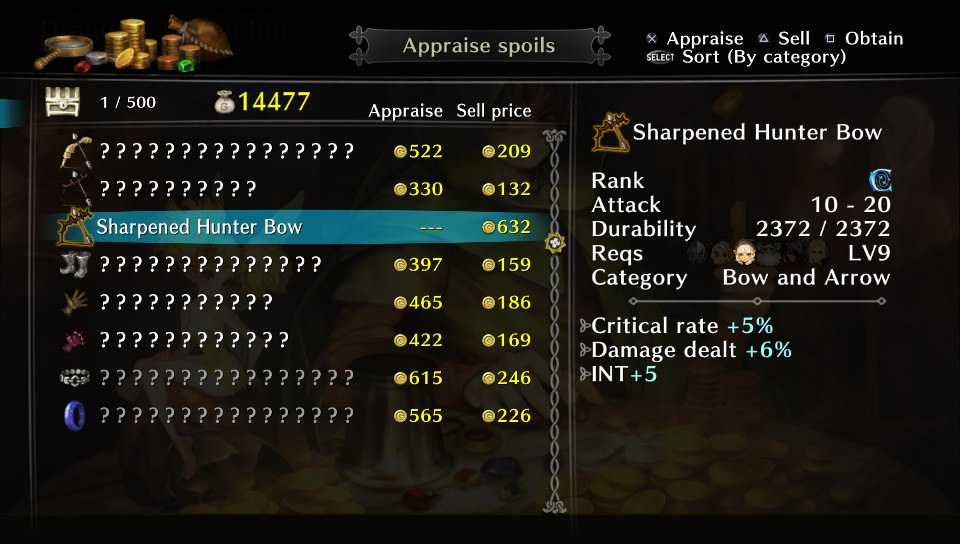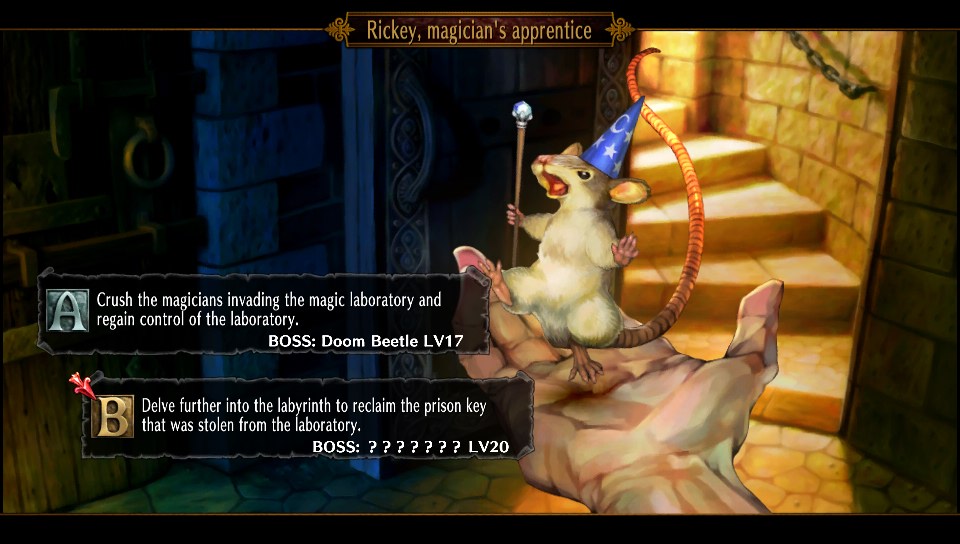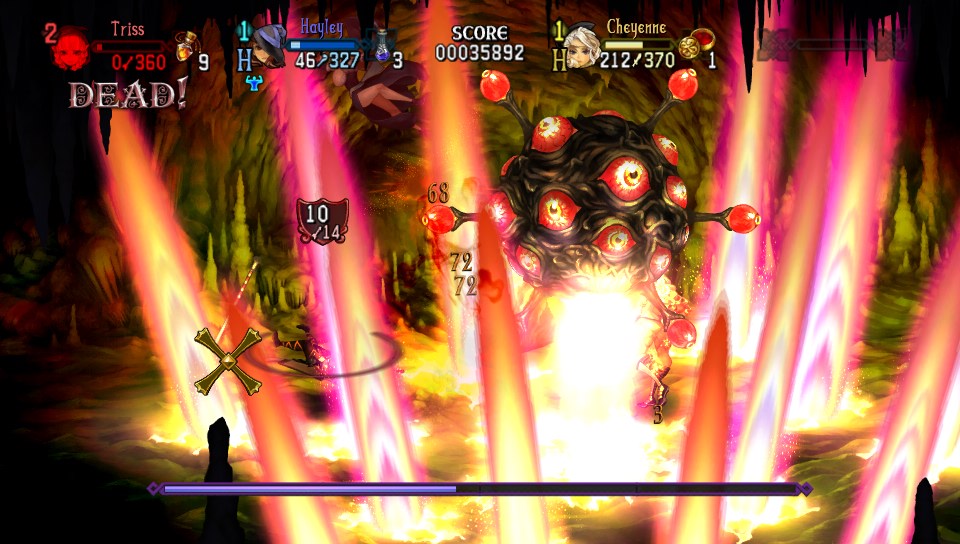Publisher: Atlus
Developer: Vanillaware
Medium: Digital Download, Blu-ray
Players: 1-4
Online: Yes
ESRB: T – Teen
Boobs, Golden Axe, Dungeons & Dragons, Japan.
Are you interested? That’s the last time we’re going to use those words today; ask about them again tomorrow. Vanillaware’s first HD game is in our midst, and has a lot of reasons to write about it. Are they good? Is it good? Is anything good? Objectively,
The last we heard of Vanillaware, they were celebrating the re-release of Muramasa on the PS Vita. Hopefully for them, it was a successful PSA that they’re still making video games, because new IP is on the market and it’s got their logo on it. “New IP” is just a big word for original creations. Like before Robocop was Robocop 2, and just Robocop without a number. Remember when Robocop wasn’t part of our lexicon? Nobody does.
We’ll get back to that analogy when Dragon’s Crown 2 and Dragon’s Crown: Inquisitor (a mobile game probably) come out in two years. What’s so special about the original Dragon’s Crown is that it happens to be one of the first arcade games to stay above water outside of an arcade setting– whatever arcades are. Local or online based co-op bring together four players to stomp around a gorgeous 2D world full of monster-shaped punching bags for hours of fun. It’s almost days of fun once you notice your hours spent in-game.
Using the word ‘fun’ almost makes it sound like this game was worth playing. In fact, it was– and still is. Coming from a history of struggling to create the perfect 2D homage/RPG hybrid game around, Vanillaware finally seems to be hitting their mark of blending action-based gameplay without weighing the initial thrill down with their habitually long-winded game length. A developer-noted 120 hours of content isn’t necessarily concise for Dragon’s Crown, but Vanillaware’s hallmark of titles overstaying their welcome is pardoned with the inclusion of cooperative and PvP multiplayer — which have both been known to extensively lengthen any game’s lifespan. Since they’re also using math for estimating 20 hours per each of six class-based characters, we’ll just take their word for it that anyone can get their fill.
Alternatively, there’s this neat little 20-hour Vanillaware game we’re reviewing that hit the PS3 and Vita this week. Read on to hear about it. Email me if you have any idea what 6 x 20 is.
Dragon’s Crown drops players into its arcadey beat-em-up world with the an endearingly shallow medieval tale of a legendary crown, the king who died trying to find it, and your job to finish the quest to control dragons, or just one dragon. I wasn’t paying attention. The centerpiece of Dragon’s Crown is in the gameplay, so at least there’s one game this generation that doesn’t feel a need to shove its plot down your throat.
I found myself comfortable with the Elf, although each class has its give-and-take against another. While no character feels overpowered, they do play at different levels of complexity, which provides an engaging experience for seasoned players, without having to alienate novice players who just want to button mash for mayhem. Not that this isn’t a game about button-mashing, but the tradeoff of landing an easy blow can come at the cost of a class who isn’t as versatile as one with more flexible attacks.
For instance, the range-based Elf finds herself in a constant hunt for arrows, which deplete as they are used. Ammo isn’t sparse, but since arrows don’t grow on trees, they have to be punched out of a lizard man every now and then. Heavier, easy classes such as the Knight always have their weapon on hand, and will only be separated from it by taking a strong blow or using a rare move that leaves them empty-handed for a moment. We won’t even talk about magic classes, because everyone knows magic isn’t real.
At the end of the day, the game feels balanced as breakfast. Attacks are punchy, have weight, and the gorgeous animation is the cherry on top, augmenting the feeling of massacring two dozen orcs as they flood the screen. Who doesn’t love a good bloodbath? Not Vanillaware; that’s who.
While online play is possible, and probably a big draw to many of you still reading, the first nine quests must be completed in order to gain access to it (via the Stables location). Some people would complain about this. They have no reason to, since the game compensates for its gamble against the impatient with CPU characters to keep you company in the few hours it will take to reach the internet.
You can find their bones for resurrection later in the town hub. This is also a great answer for anyone without an online connection or any friends in real-life, not to correlate how my life is related to a game’s design. These CPU characters are effective and obedient, probably running with some basic AI, but to the extent that they won’t fuck you over for trying to complete a quest like “Open the treasure chest without waking up the guards.” I like them, and you will too– now don’t worry about the few hours you’ll be depraved of online co-op and move on with this review.
Playing online will offer a few perks, such as finding bones of a precipitous level higher than you may be at, allowing for resurrection at a later date when you need an OP team to ensure a boss takedown. You’ll also get to meet people from other cultures, and on the Vita, experience the only version of multiplayer available on the console. From my experience, there was no noticeable lag or intrusive loading outside of the initial sync before loading an area.
At first, I thought the dungeon runs to be too short, but in fact they match the pacing of the game, which is divided up into a succinct town hub for partying up, repairing items, or doing business with various vendors for magic buffs and new recruits. Loot is a big part of the game, so each adventure past the wall will return players with several items, ranked accordingly from D to S, featuring different attributes just like you’d hope for in a game that resembles a 2D Diablo structure. The pillaging, leveling up, and development of your chosen character is what fuels the addiction to go back out and bust up all the baddies of the world, and incidentally suture the open hole where a cooperative brawler from the arcades would have filled with quarters and continue-shaped question marks.
Turns out, when you rip out the microtransactive nature of coin-op cabinets, it’s hard to install a quarter slot into a piece of hardware that people owned in their living rooms before your game came out. It’s probably even impossible. Since turning an arcade game into a world of mobile in-app purchases for more lives is only going to infuriate people, the solution has to be found on the disc, in the game. That’s what Vanillaware has accomplished in Dragon’s Crown, without simply making an arcade game where players can insert virtual quarters with the hit of a Select button. This is what you are paying for, and it’s good behavior like this that developers deserve to be recognized for.
You will still die a lot, and the ‘Continue?’ option remains at the cost of the gold you’ve been collecting in-game. This is a negligible difference, due to how common gold is, and this practice is only instituted once players have run out an initial queue of extra lives. The branching paths and sidequests also offer up some of the more playful ideas and boss fights in Dragon’s Crown, mostly due to the game experimenting with what twist can be applied to a typical day in the forbidden woods. There’s a lot going on to solve the problem of arcade games at home.
Since you have to choose a version, which one is for you? Under full disclosure, the performance on Vita is stable until things get crazy onscreen, which is where you’ll see the framerate take a little hit. I never thought this was a dealbreaker. The OLED screen also does a lot to marry the art with a reason to own a Vita. Meanwhile, the game looks drop-dead gorgeous on PS3 without the Vita’s performance issues, but it also can’t deliver the convenience of using the touchscreen to select items in combat; a utility that is greatly missed when moving between versions of the game. The PS3 version’s local co-op feels like a core part of this game’s heritage, but with network play over the Vita, the novelty of always having Dragon’s Crown at your side is hard to argue against.
Both the PS3 and Vita versions have cooking mini-games. Both versions have the tapping mechanic to knock out items from the backdrop, or activate magic runes. Both versions look crystal clear, and both versions have all the same content as the other. This is probably why they support cross-save transfers. Why cross-play isn’t supported is a mystery, and a misgiving that is hard to get over.
If you came to this review looking for a definitive version, then you found it.
Dragon’s Crown has a lot to offer, from building one of the finest co-op games this generation, to leaving one nagging issue for us critics to nitpick in the lack of cross-play support. It’s one of the prettiest games around, the addictive structure of the game compliments how many hours can be sunk in (with friends or on your own), and there’s even some PvP stuff for anyone who really wants to put their money where their mouth is. Even the music is charming.
It’s okay in my book, and I don’t even have a book.


